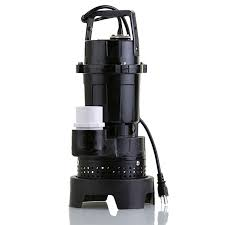An ejector pump is a specialized device used to remove wastewater or sewage from lower levels—typically basements or areas below the main sewer line. Unlike standard sump pumps, ejector pumps are capable of handling solid waste, making them essential in homes or facilities with basement bathrooms or laundry rooms.
To better understand the role of ejector pumps, it’s important to explore why they’re necessary in specific locations and systems.
Why Are Ejector Pumps Important?
Ejector pumps solve a common challenge: gravity. In plumbing, waste typically flows downhill to a main sewer. But when bathrooms or drains are located below that level, gravity alone won’t do the job. That’s where an ejector pump comes in—it pushes wastewater upward into the main sewer line.
This essential function makes ejector pumps especially valuable in specific environments. Let’s look at some of the most common and practical applications.
Key Applications
- Basement bathrooms
- Laundry rooms below grade
- Commercial buildings
- Rural homes with septic systems
- Factories or warehouses with subfloor drainage
Whether you’re a homeowner or a contractor, knowing where ejector pumps are used helps you make better purchase decisions. Now that we’ve covered where ejector pumps are needed, let’s take a look at how they actually work behind the scenes.
How Does an Ejector Pump Work?
Here’s a quick breakdown:
- Collection Basin: Wastewater flows into a sealed pit.
- Float Switch Activation: As the basin fills, a float triggers the pump.
- Pumping Action: The pump moves the water (and solids) upward through a discharge pipe.
- Check Valve: Prevents backflow into the pit.
Modern ejector pumps are designed with durable motors, grinder blades, and alarm systems for reliable performance and safety.Understanding how these components operate can help when selecting a pump that fits your specific system’s needs.
Choosing the Right Ejector Pump
When buying an ejector pump, consider the following factors:
- Capacity (GPM or GPH)
- Horsepower (HP)
- Solids Handling
- Material
- Alarm Feature
- Warranty
For high-traffic areas or commercial use, go for a heavy-duty model with grinder blades.
Even the best equipment requires care. To make sure your ejector pump stays efficient and trouble-free, consistent maintenance is key.
Maintenance Tips
To ensure long-term performance:
- Inspect the pump every 6 months
- Clean the pit annually
- Test the float switch regularly
- Check for unusual noises or odors
Proactive maintenance reduces the risk of flooding and extends the pump’s life. And if something goes wrong, quick troubleshooting can help you identify and fix issues before they escalate.
Common Issues and Troubleshooting
- Pump won’t turn on
- Odors
- Frequent cycling
- Clogs
Timely inspections can prevent costly repairs or replacements.
Now that you understand what ejector pumps do, where they’re used, how they work, and how to care for them, let’s bring it all together with a few final thoughts.
Final Thoughts
An ejector pump is a must-have for buildings with below-grade plumbing. It ensures clean, efficient wastewater removal and protects your property from backups or flooding. Whether you’re installing a new unit or replacing an old one, choosing the right model based on application and capacity is key.
For reliable performance and long service life, invest in a quality ejector pump with a strong motor and solid construction.
Looking to source ejector pumps for residential or commercial use?
Explore high-performance models from trusted manufacturers at BESQO Marine—your global solution provider for industrial equipment and system parts.
